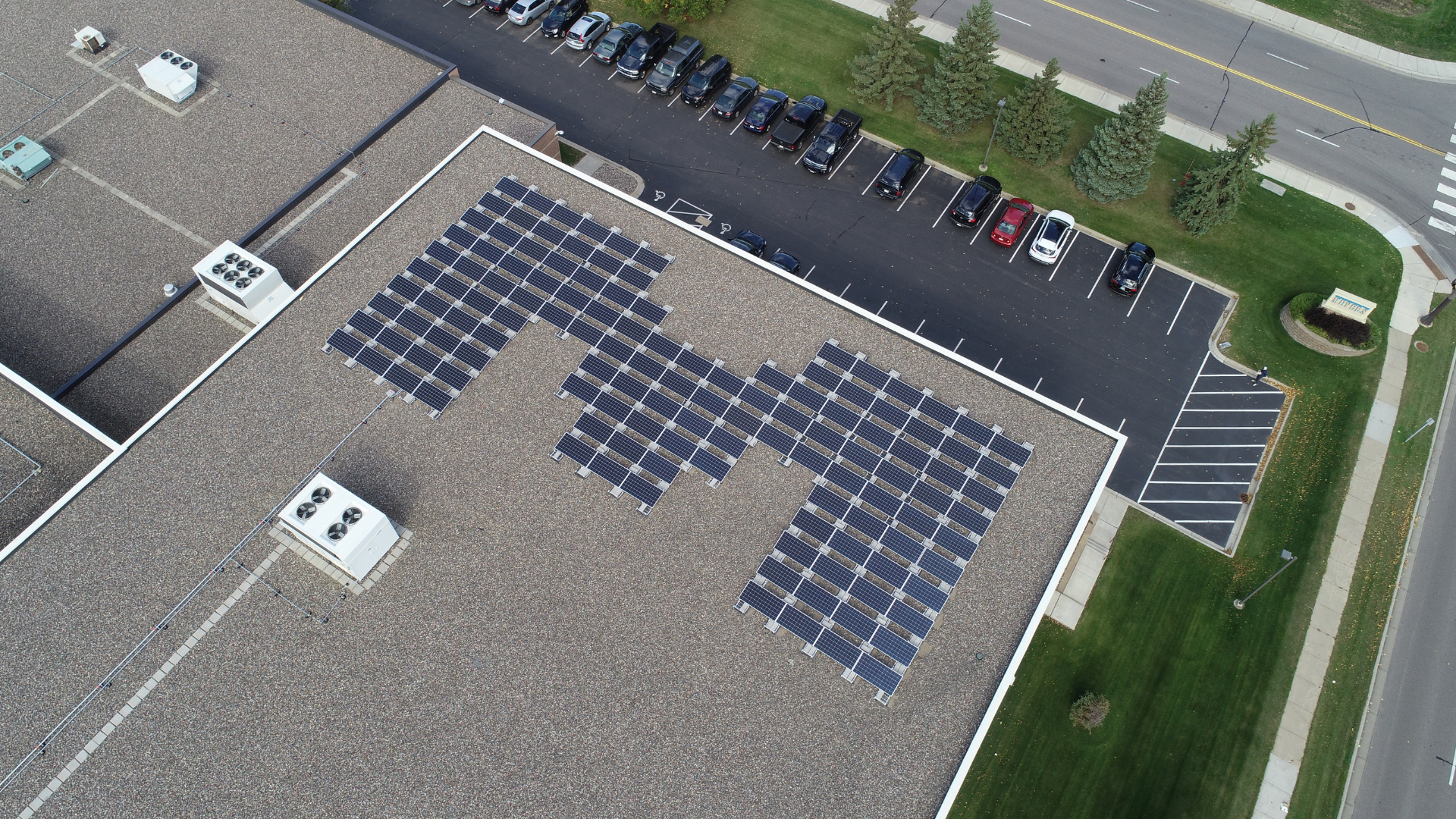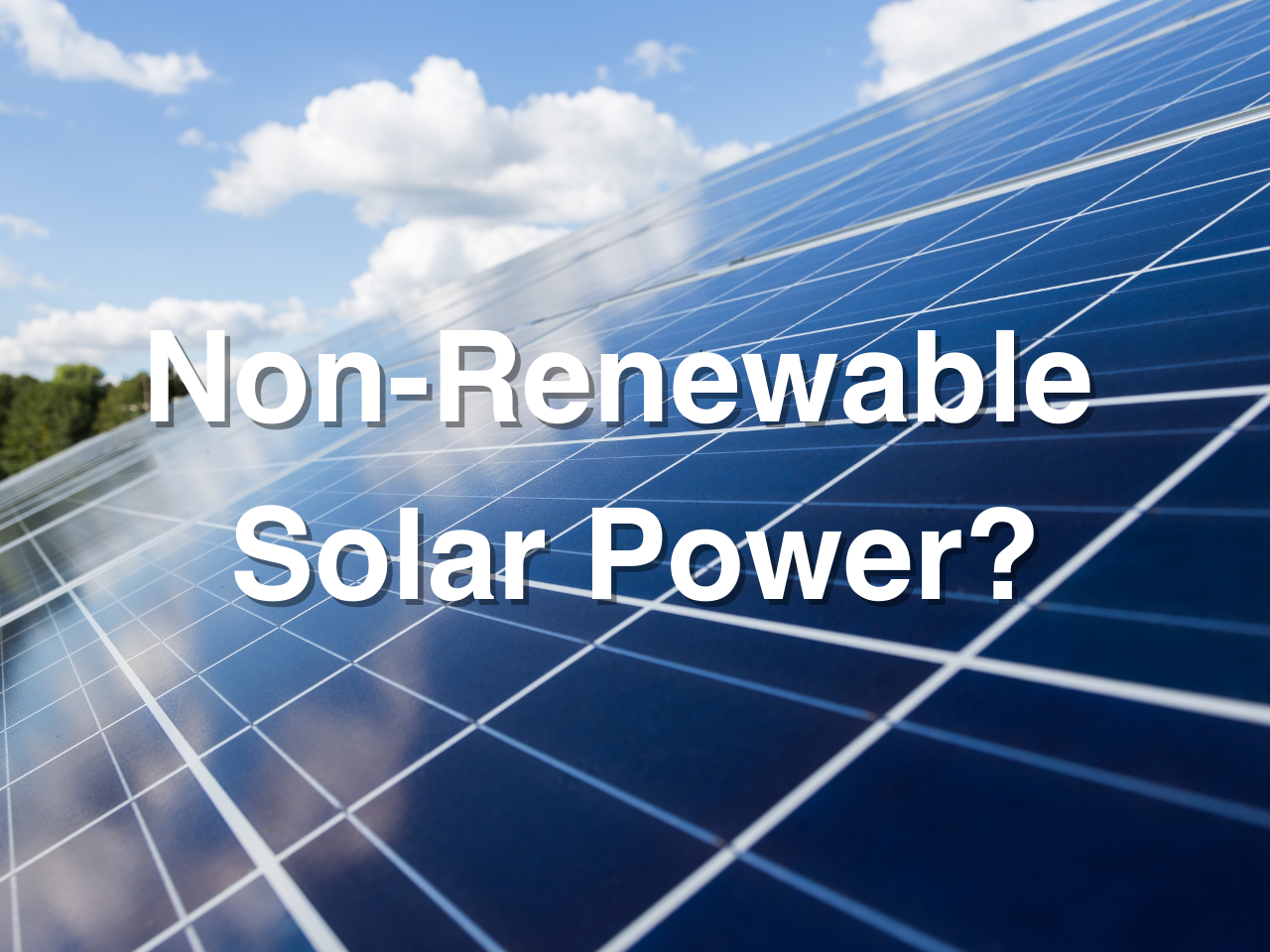The electricity from our solar panels isn’t renewable. What? How?
Solar panels are one of the leading sources of renewable energy across the world. So, it’s reasonable to expect that if you install solar panels and connect them to your power supply, you’ll be getting renewable energy from them. As it turns out, it’s a bit more complicated than that.
Let’s rewind to early 2020 when the team at Meyers decided it was time to better recognize the scientific truth that climate change is real, it’s manmade, and it’s dangerous. While talking about how we would change our operations and our purchasing based on this reality, the question of greenhouse gas emissions (aka carbon emissions) came up repeatedly. We knew our largest source of emissions was very likely to be our electricity usage – modern printing companies use large amounts of electricity to cure UV inks.
We could just buy offsets to make up for the pollution from our electricity usage. But we decided that wasn’t in line with the scientific consensus. Offsets work too slowly and don’t address the underlying issue. The real issue here is that our society is using an unsustainable amount of fossil fuels. These create greenhouse gas emissions that lead to climate change. So, if we want to be part of recognizing the scientific truths behind climate change, then we need to divorce ourselves from fossil fuels as much as possible, as quickly as possible.
We next discussed purchasing renewable energy from our utilities. Ideally, we’d go a step beyond renewable energy and get carbon-free energy. This is electricity that doesn’t contribute to global warming and climate change while it’s generated. We correctly presumed buying wind and solar-powered electricity from our local utility would be a cost-effective method of getting carbon-free energy without large amounts of upfront investment. Still, it would be nice if we could prove we were adding to the overall supply of renewable energy.
That’s when the idea of installing our own solar array on our rooftop came up.
The team loved this idea and we set off to research our options. It quickly became clear that providing 100% of our electricity through solar panels here outside Minneapolis wouldn’t be possible. Even getting to 50% would be cost-prohibitive due to the upfront install costs. But we could create some renewable energy and, therefore, could purchase less from outside groups. We decided to move ahead with installing an array made up of 128 solar panels. This would generate a small amount of our electricity – less than 5% – but we could afford to make the investment and we knew it would be better than nothing. We would be generating some carbon-free electricity on-site.
Our solar array ‘went live’ in the fall of 2020, which is when we publicly announced our commitment to purchasing 100% carbon-free electricity by the end of 2021 and going forward. We celebrated with our sustainability-focused clients, and we felt great about the entire initiative.

It wasn’t until early 2022 that we started to learn that our solar panels didn’t work how we thought they did.
We need to talk about Renewable Energy Credits or RECs to really understand this. RECs are a system of accounting for renewable energy. The idea is basically that electricity is electricity. It’s not clean or dirty.
Why? Our grid works a bit like a giant water tower. All the electricity gets mixed together in the grid much in the same way that water from different sources would get mixed together in a water tower. So, how do you know who drank water from which source – or used electricity from which source? You don’t. That’s why RECs were created. They’re a sort of accounting system that allocates the ‘renewableness’ of electricity to particular groups. Sources of renewable electricity are, in effect, creating both electricity and RECs. Those RECs can then be retained by the group that owns the renewable electricity source or be sold to other individuals or organizations.
We had to purchase RECs to meet our 100% carbon-free electricity goal in 2021. And it’s a good thing we did. We purchased more RECs than we believed we’d need just in case our electricity usage was higher than we forecasted. Our usage wasn’t higher than we forecasted, but we needed the additional RECs anyway. If not for these RECs, we would not have fulfilled our 100% carbon-free electricity pledge on time. That’s because it turns out we’re not getting renewable electricity from our solar panels.
That’s right. Our solar panels, which are connected to our power supply, do not give us renewable energy.

Instead, we get only the electricity. The renewableness, in the form of RECs, goes to our local utility. So, what’s the lesson here?
If you have solar panels or any other form of renewable energy generation installed, you’re helping build a brighter future where we burn fewer fossil fuels and slow down climate change. You might also be creating a good revenue source for your local utility that can sell the RECs your system generates. In that case, you won’t be getting any credit for the renewable energy in the accounting system used across our country.
We strongly recommend that any individual or organization who installs solar panels, wind turbines, or any other method of generating renewable energy check their contract to see who is getting the RECs. And be careful how you phrase your use of, or generation of, renewable energy to your network. Don’t be like us and find yourselves writing a blog article about how the renewable energy you said you get from your solar panels doesn’t actually count as renewable.
And don’t worry. If you buy an electric car, there’s no accounting system that says it counts as a gas car. If you bike commute, there’s no accounting system that says you’re really driving a gas guzzler. Most things in the world of sustainability are closer to what they seem than renewable electricity. So, go out and be green!

